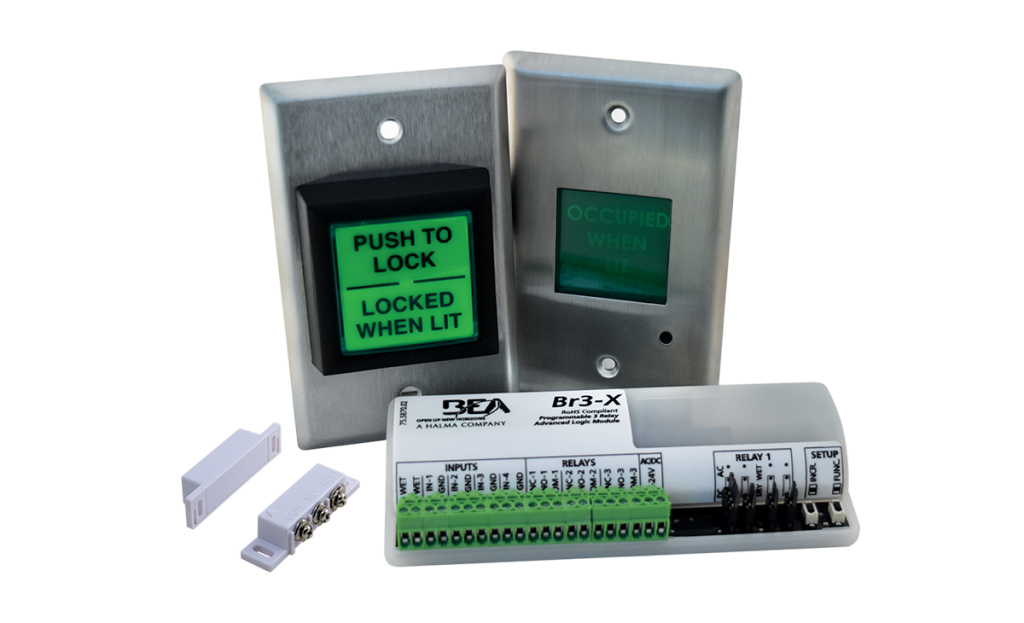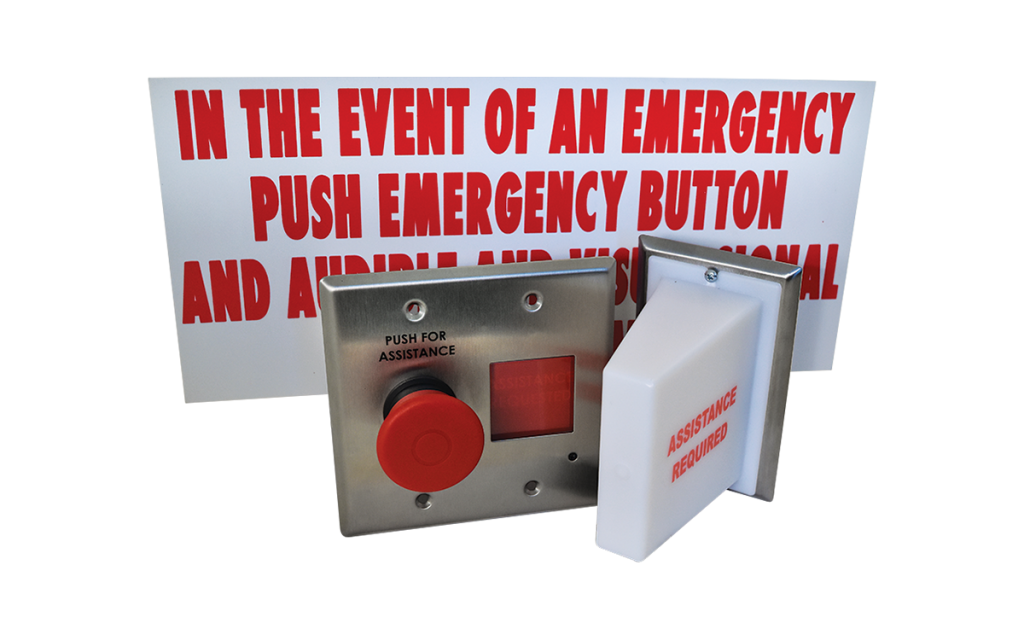Questions continue to arise regarding how to properly specify/supply hardware for a single restroom door with an automatic operator. The challenge is that the outside actuator (push button) for the automatic operator has to be interfaced with the locking system; otherwise, the actuator could open the door even when the restroom is occupied.
I wrote about this topic last summer, and there was a lot of great feedback about various ways to handle this application. I recently read about the BEA Restroom Kit, and it seems like a simple solution.
 This kit is designed to be used with an electric strike, electrified lockset, and an automatic operator with actuators, and includes the following components:
This kit is designed to be used with an electric strike, electrified lockset, and an automatic operator with actuators, and includes the following components:
- Logic Module – Controls the functionality of normally locked or normally unlocked, single occupancy restrooms
- Door Position Switch (DPS) – Tells the logic module if the door is closed or not closed, and resets the system when the door is opened manually from the inside
- Occupied Indicator – Lights up when the door is locked (from the inside), signaling that the restroom is occupied (from the outside)
- “PUSH TO LOCK” Button – When pushed (from the inside with the door closed), locks the door, turns on the occupied indicator, and inhibits the outside actuator for the automatic operator
This is how it works:
To enter the restroom, push the automatic operator actuator, and if the room is unoccupied the door will unlock and open automatically. After entering the restroom, the door will close. When the door is closed, push the button marked “PUSH TO LOCK.” The door will lock and the button will illuminate to indicate that the door is locked, the indicator on the outside will signal that the room is occupied, and the automatic operator actuator on the outside will be deactivated. To exit the restroom, push the actuator for the automatic operator, and the door will unlock and open automatically (or you can open the door manually). The indicators will turn off to indicate that the room is unoccupied, and the outside actuator for the automatic operator will become active.
 An emergency add-on kit is also available, which includes a push button to be mounted inside of the restroom along with signage, and a light with an audible signal to be mounted outside of the restroom. Pushing the button unlocks the door, lights an indicator beside the push button, and activates the outside signal to indicate that the person in the restroom needs assistance. This has been required by the Ontario Building Code for public restrooms since February 2017, and can be used in conjunction with the restroom kit or separately.
An emergency add-on kit is also available, which includes a push button to be mounted inside of the restroom along with signage, and a light with an audible signal to be mounted outside of the restroom. Pushing the button unlocks the door, lights an indicator beside the push button, and activates the outside signal to indicate that the person in the restroom needs assistance. This has been required by the Ontario Building Code for public restrooms since February 2017, and can be used in conjunction with the restroom kit or separately.
Does your local building code require a way for someone inside the restroom to call for emergency assistance? Would the components of this kit meet those requirements?
You need to login or register to bookmark/favorite this content.






We have installed a very similar kit (Possibly the same kit under a different name judging by the control unit) in a handicap washroom in a high school where wheelchair students wanted the ability to use the washroom unassisted. The unit works well with the Auto Equaliser opener, and the students and staff are very happy with it. For locking we used a Schlage B-250 with an electric strike. This allows staff to enter if assistance is needed. This washroom is also used by high special needs students as it has a gantry and lift system and often staff have to come and go during a change of clothing or whatever so the B-250 gives them key access
Thank you
I wonder why Canada called out restrooms for the emergency contact?
Is it only required with this type locking arrangement??
We have been using Camden washroom kit just for this purpose here in Canada Province of Ontario. However as always its up to the AHJ to give the final approval .But so far no complaints.